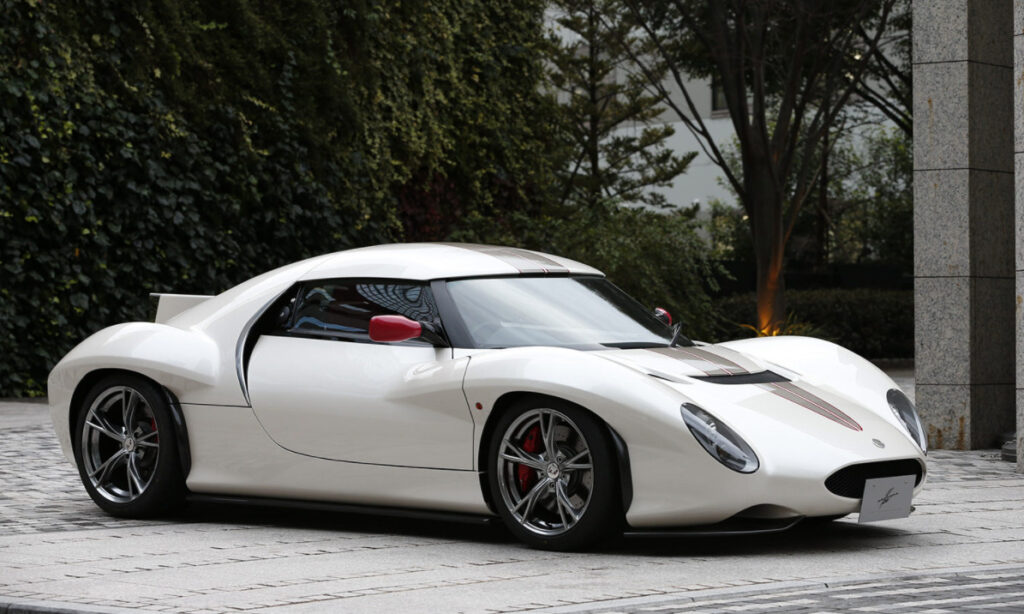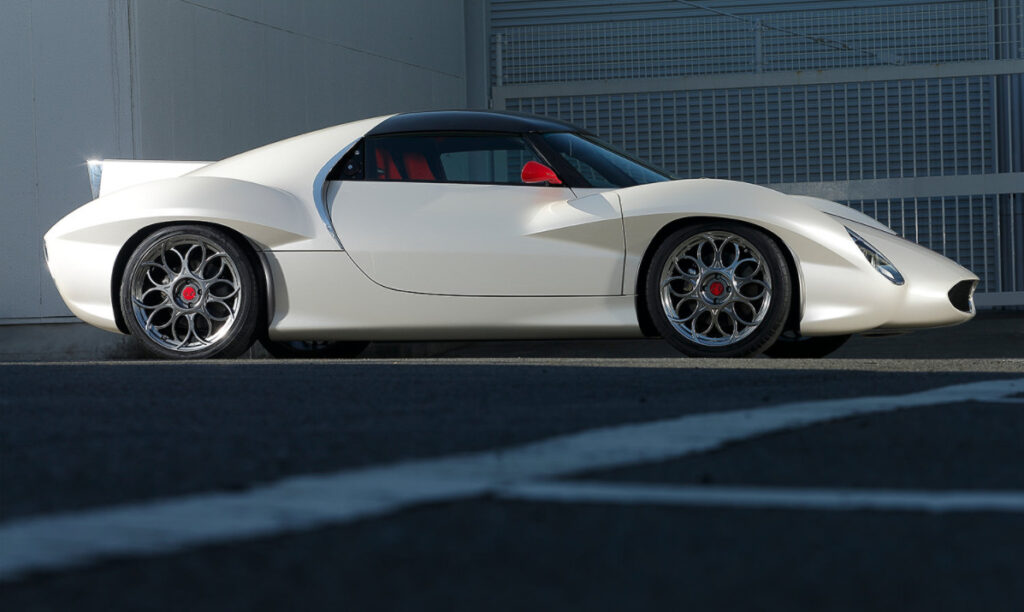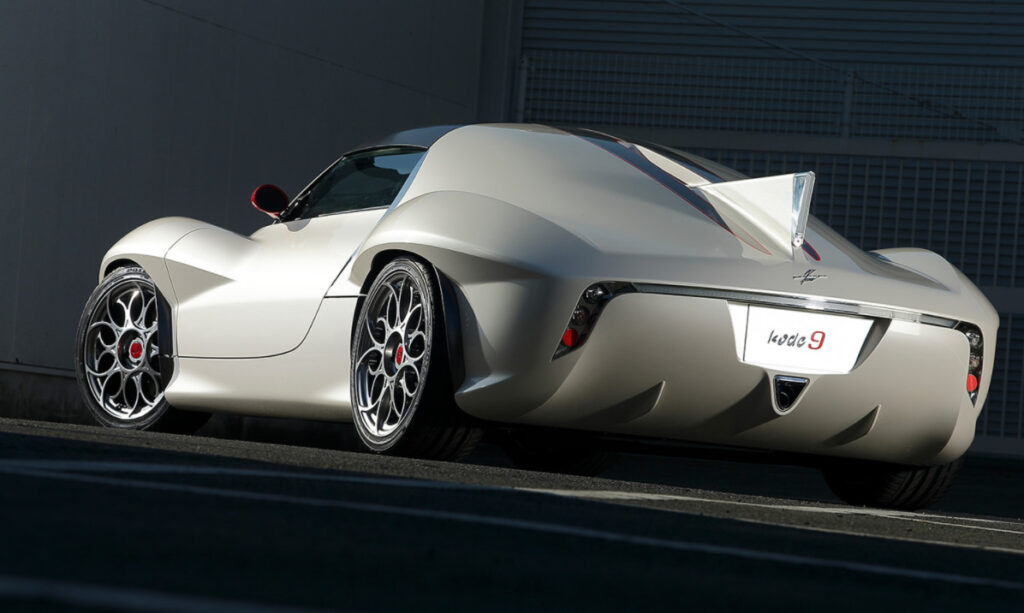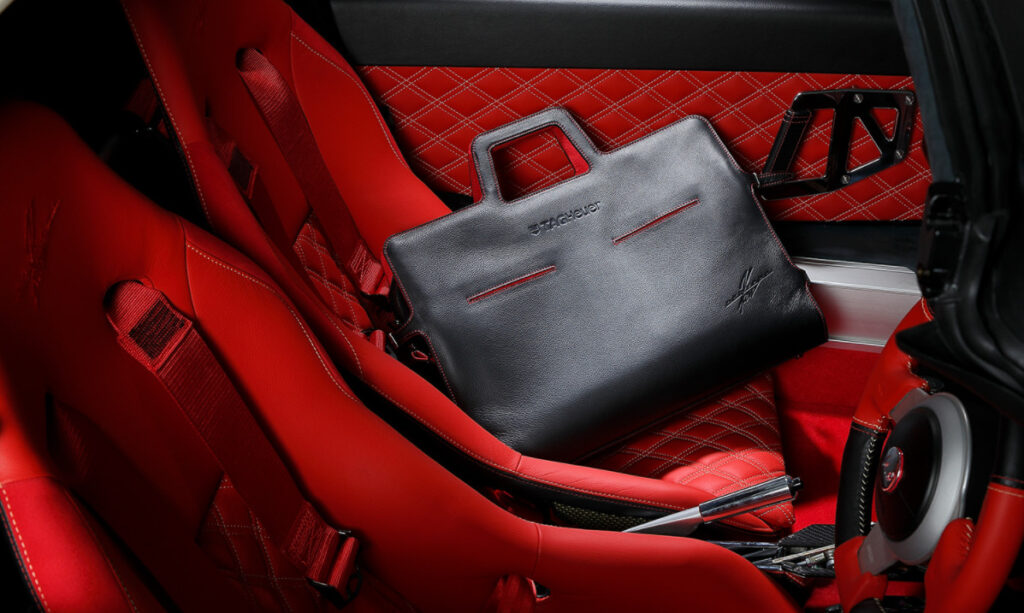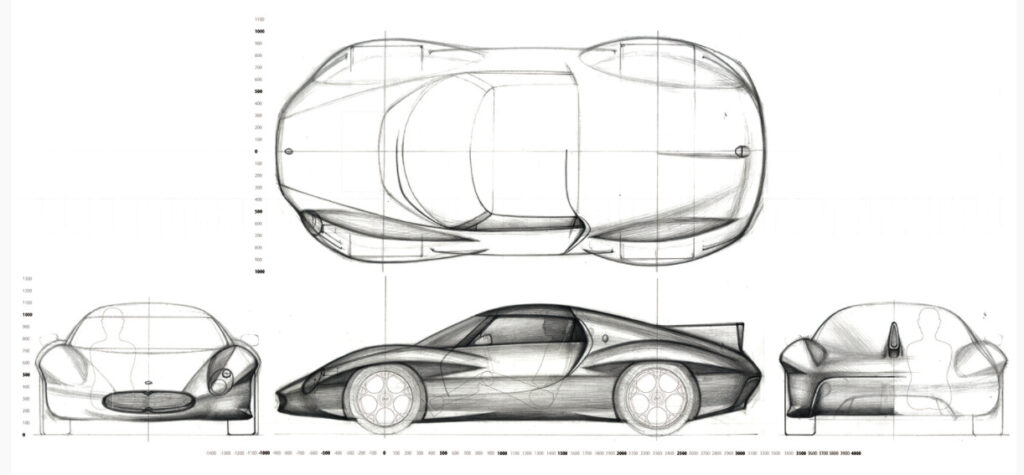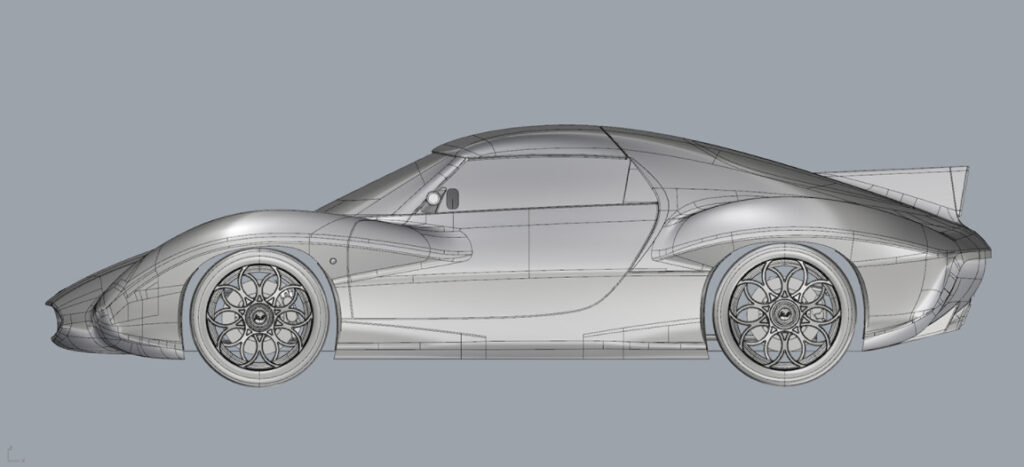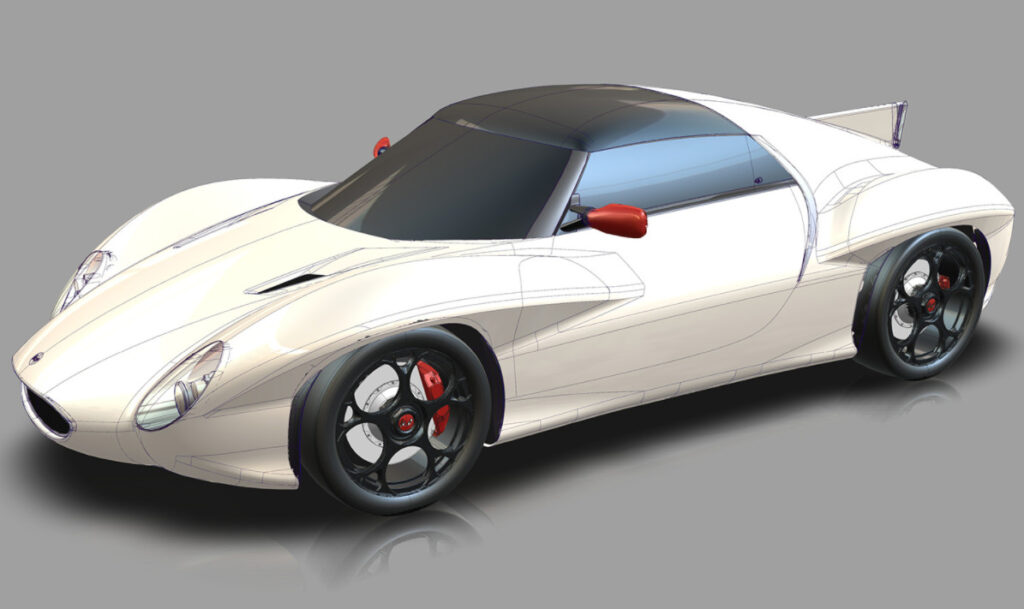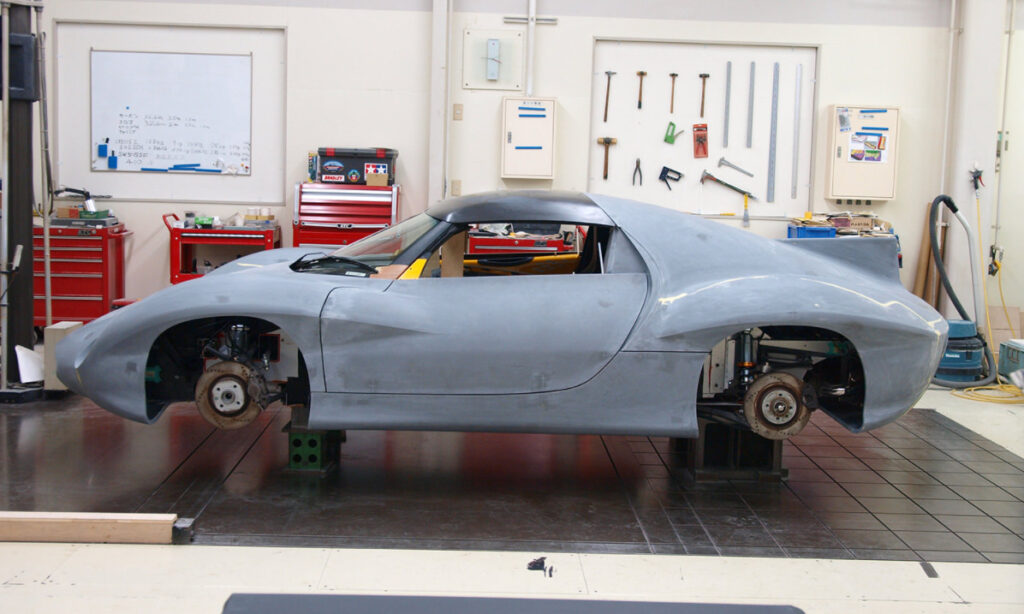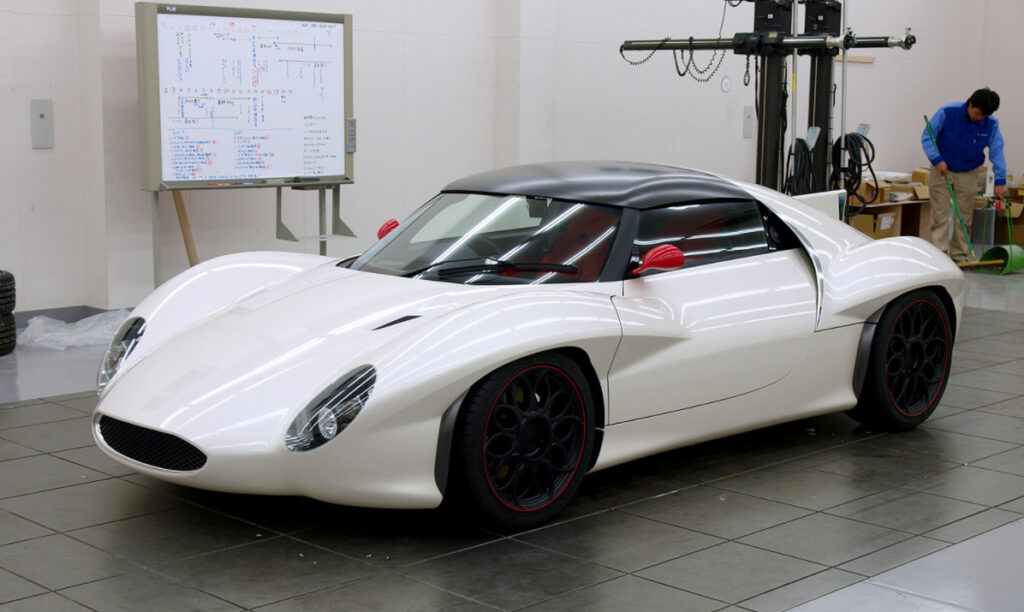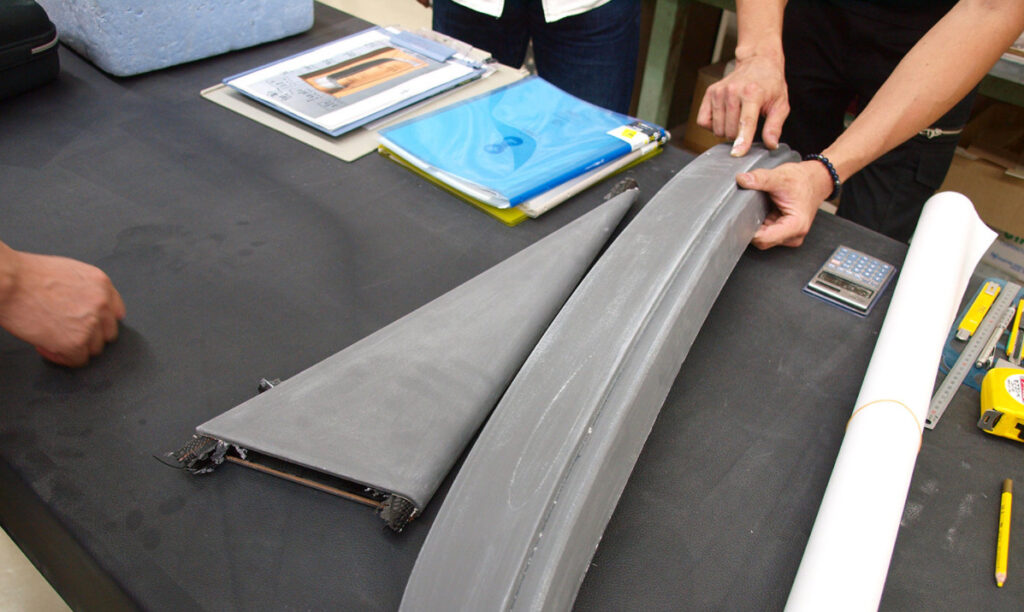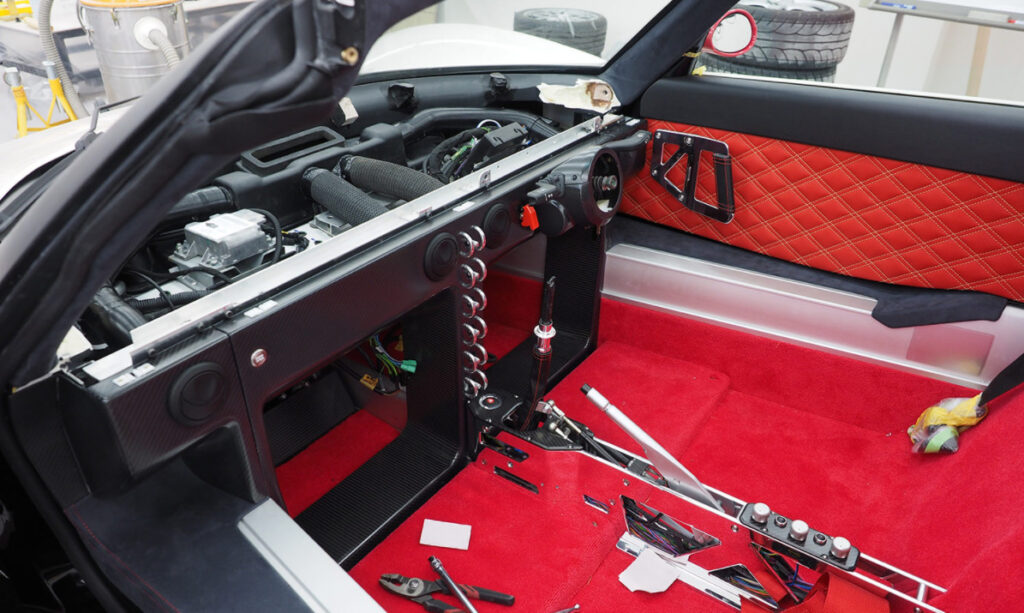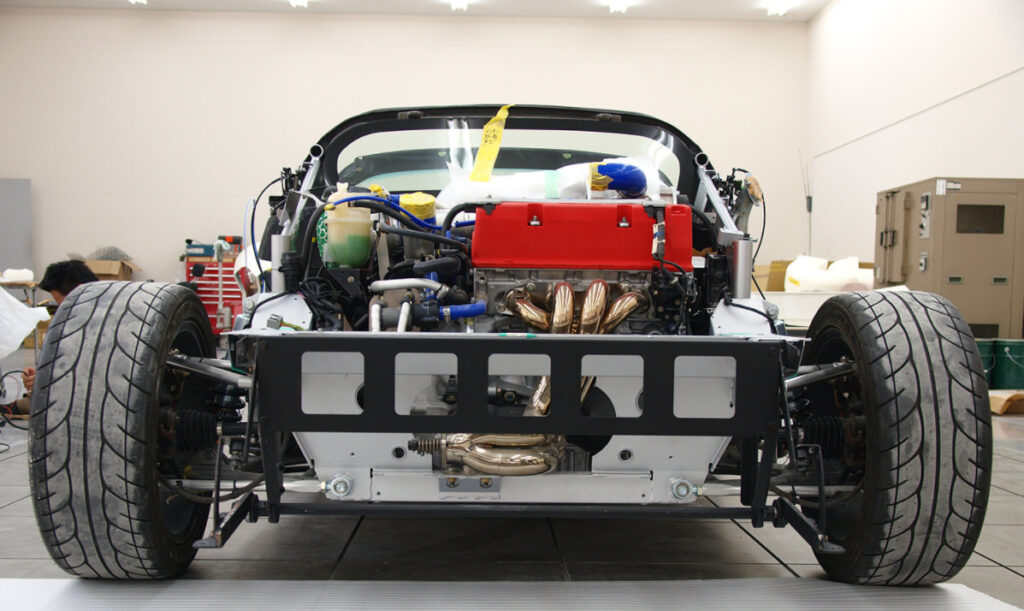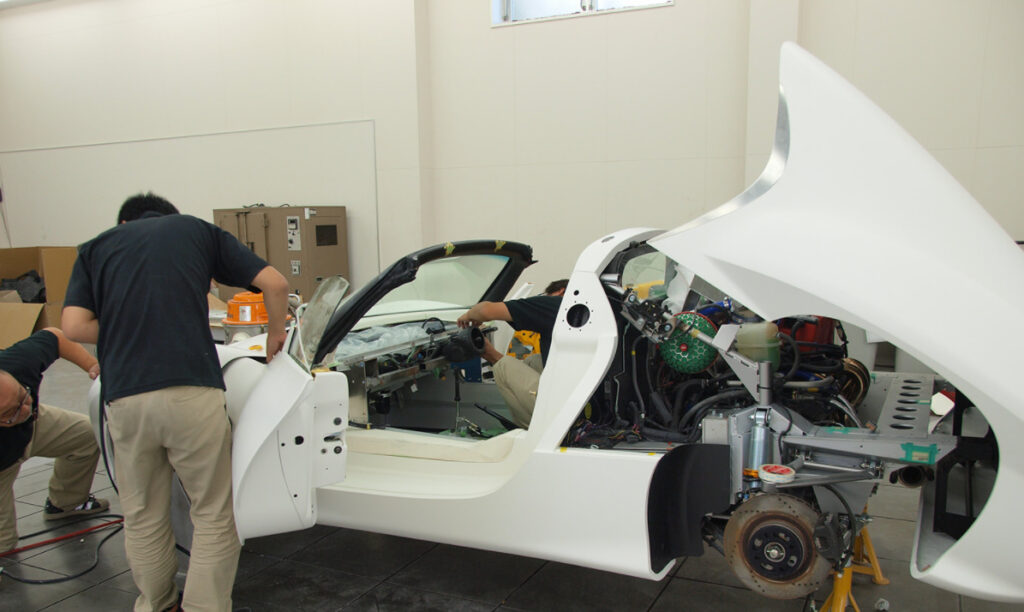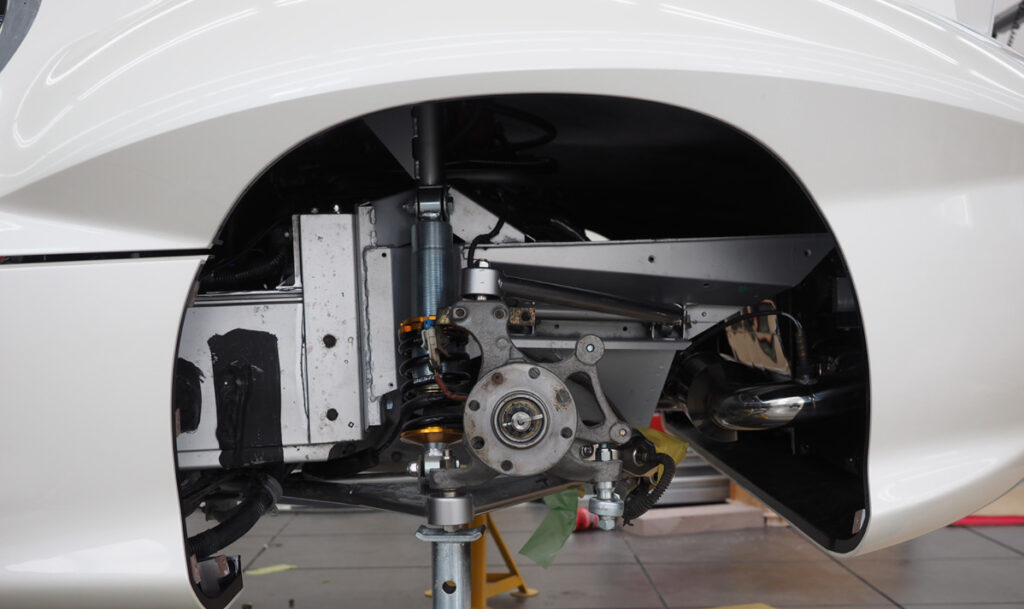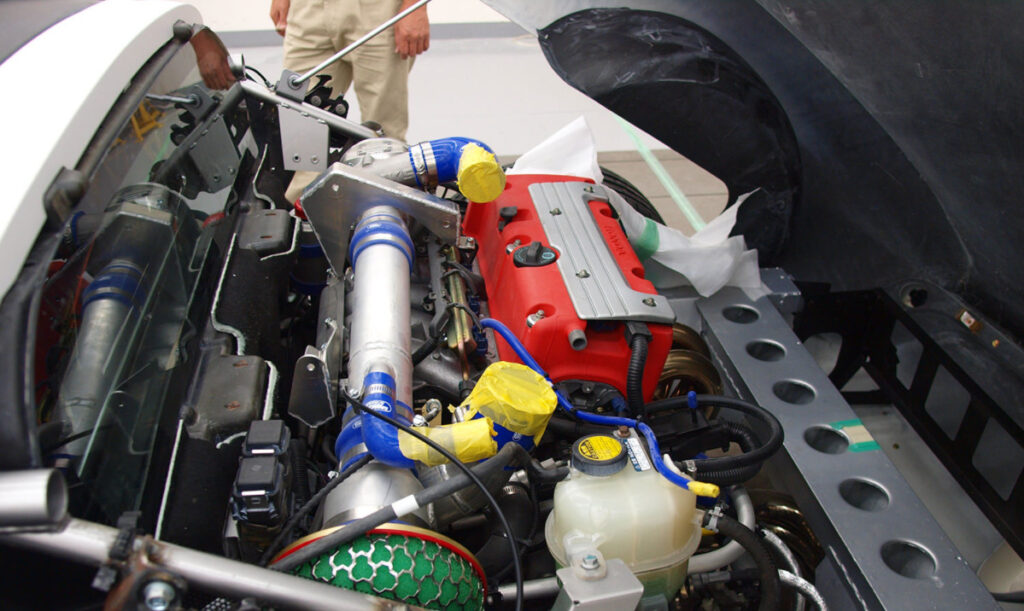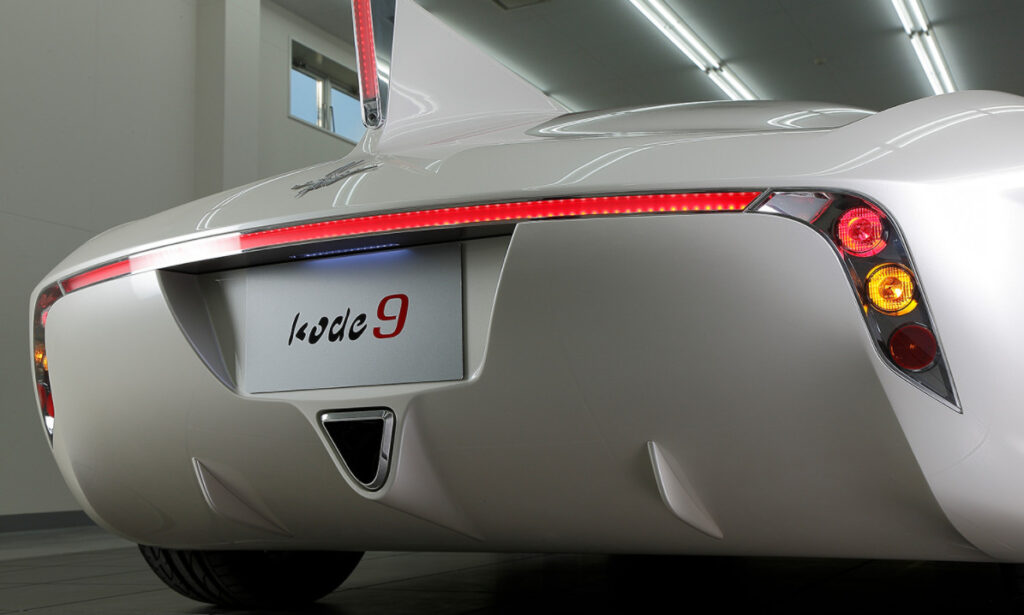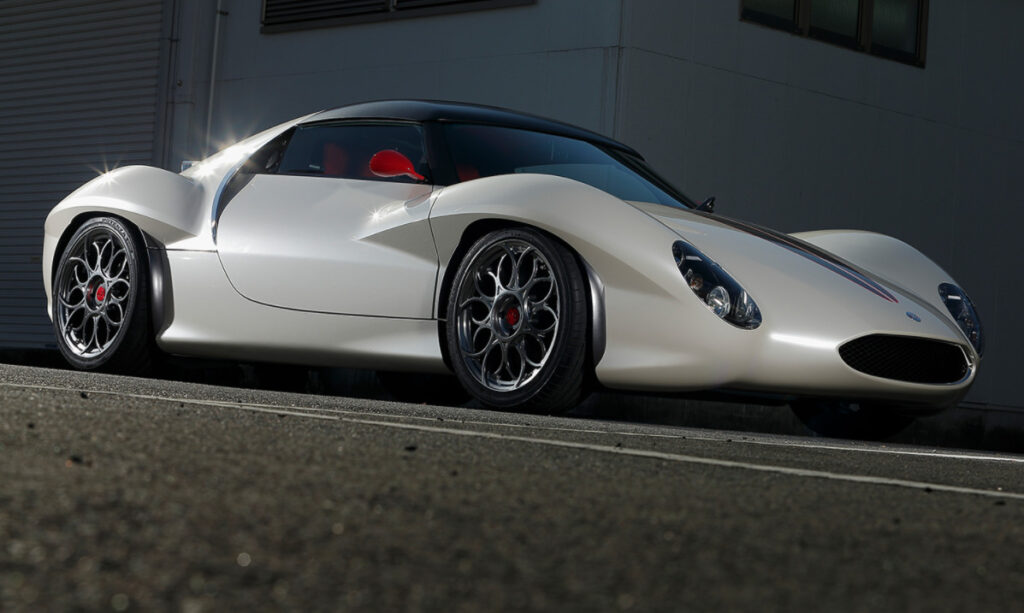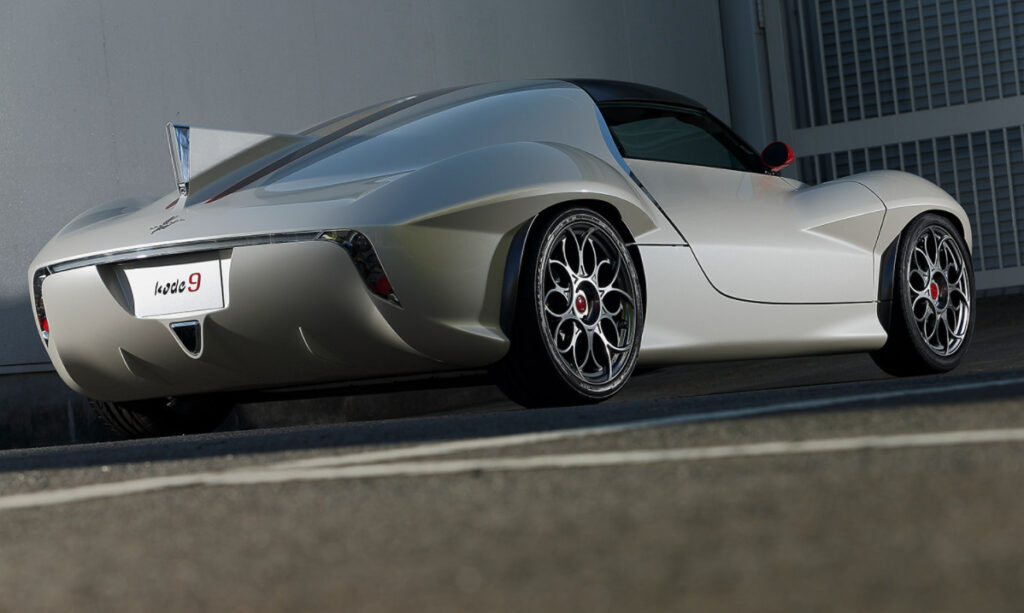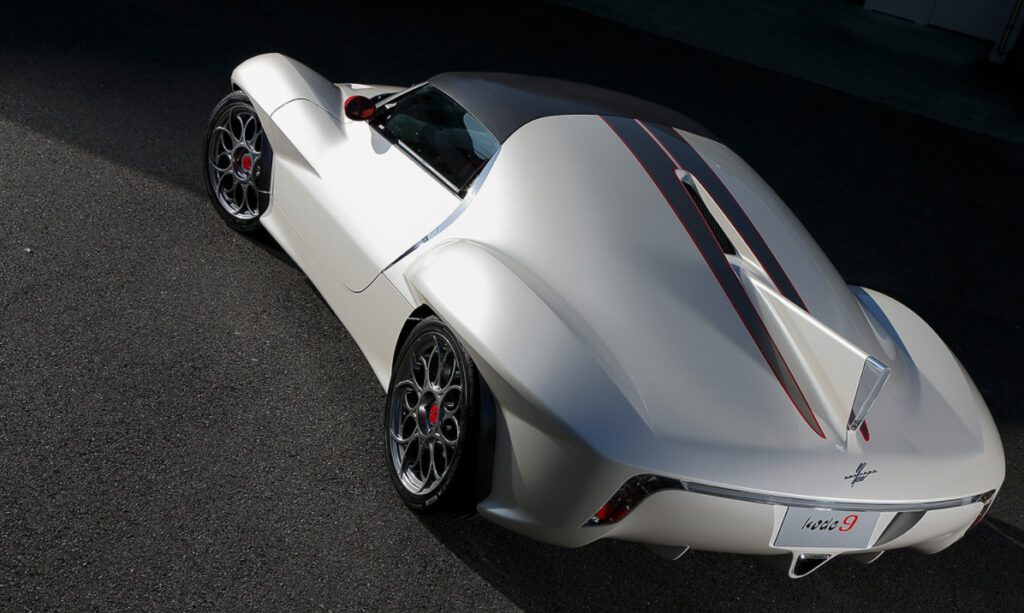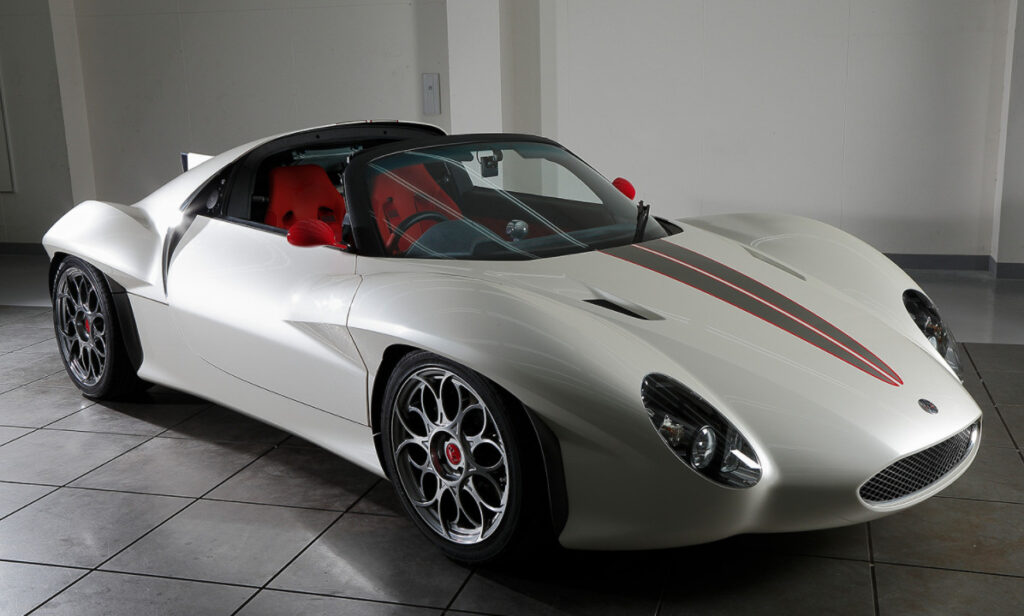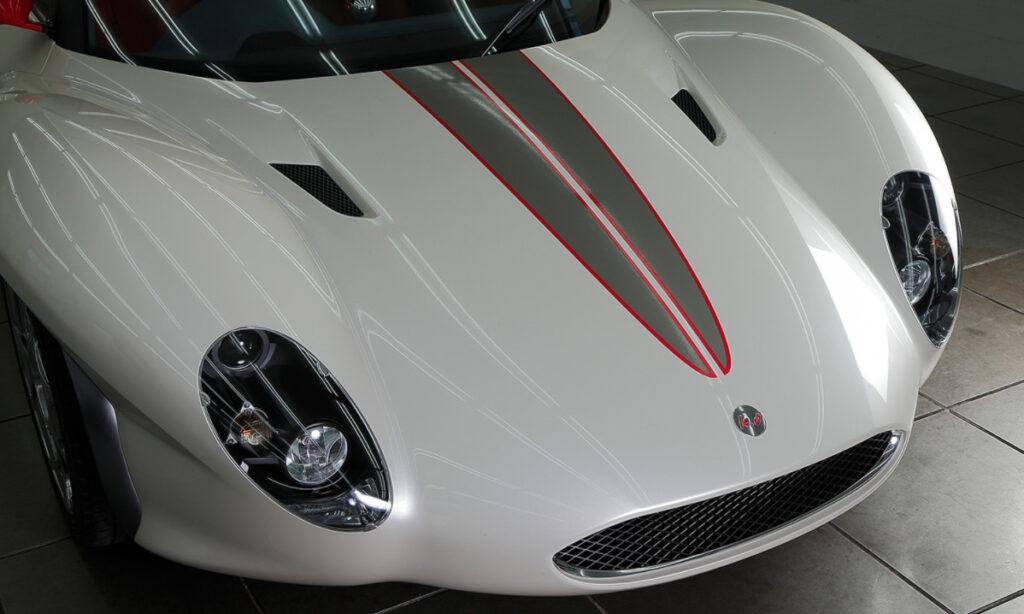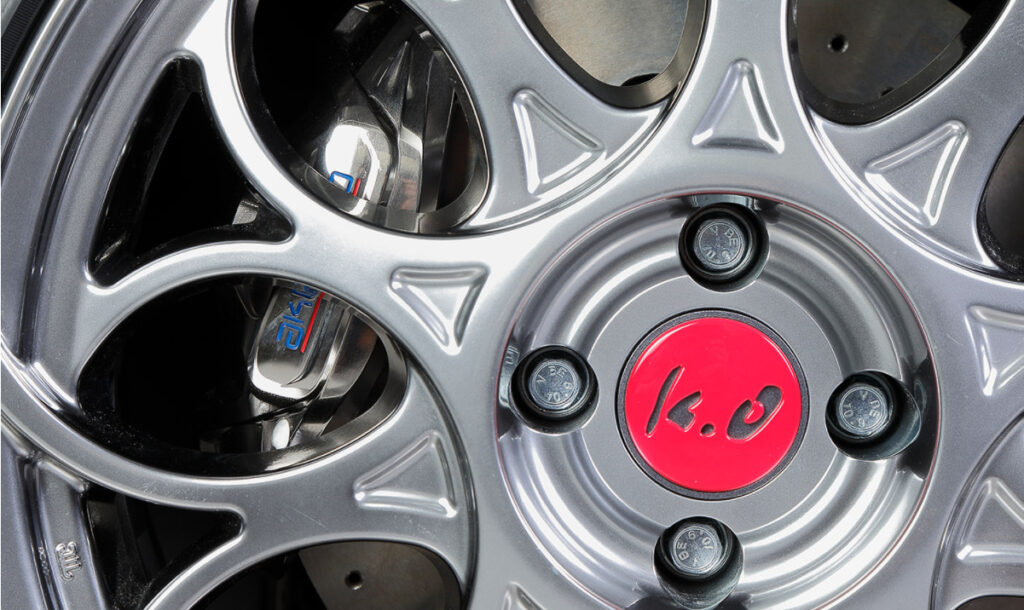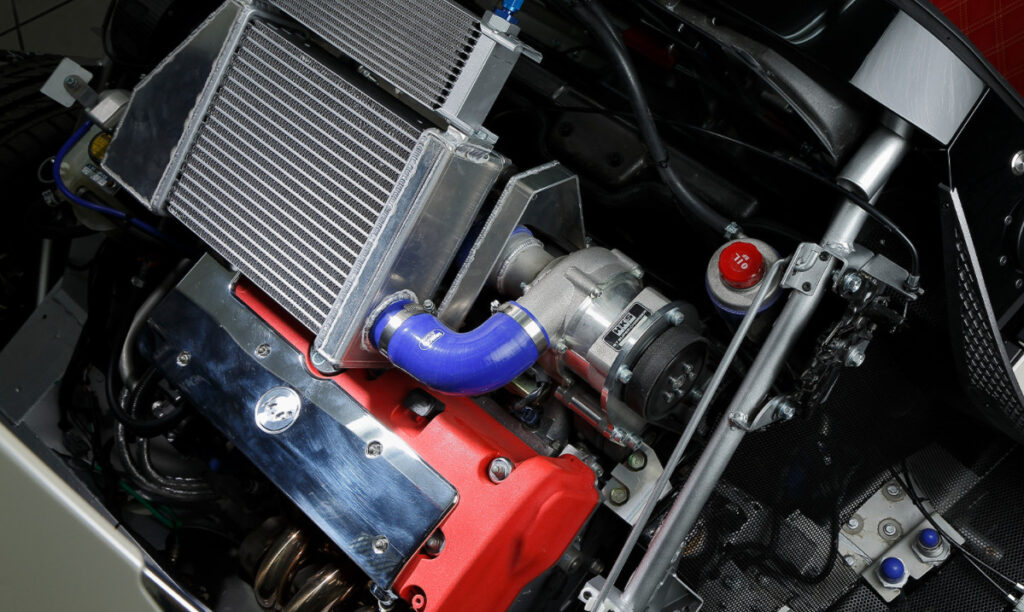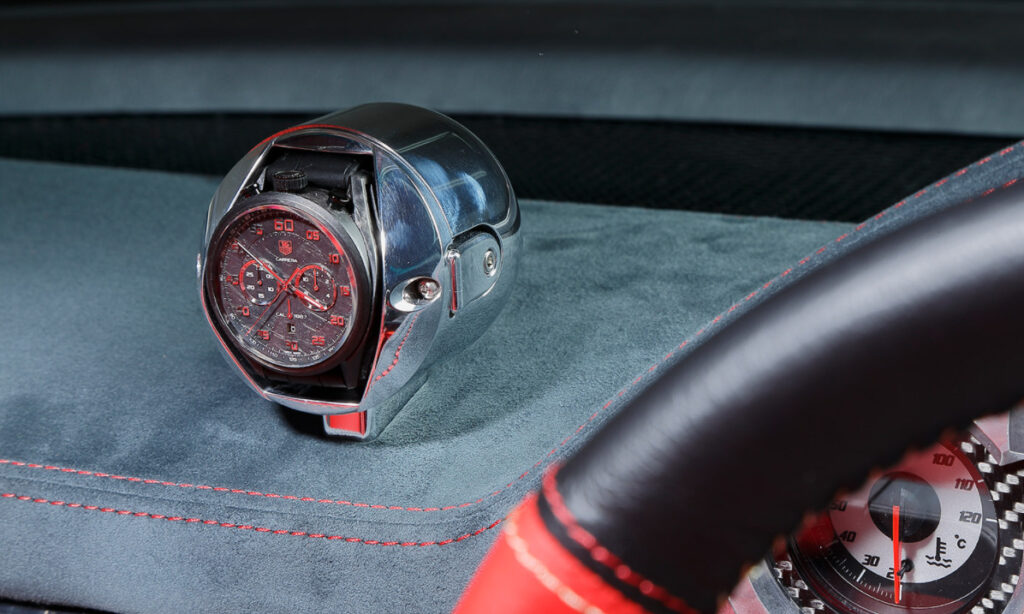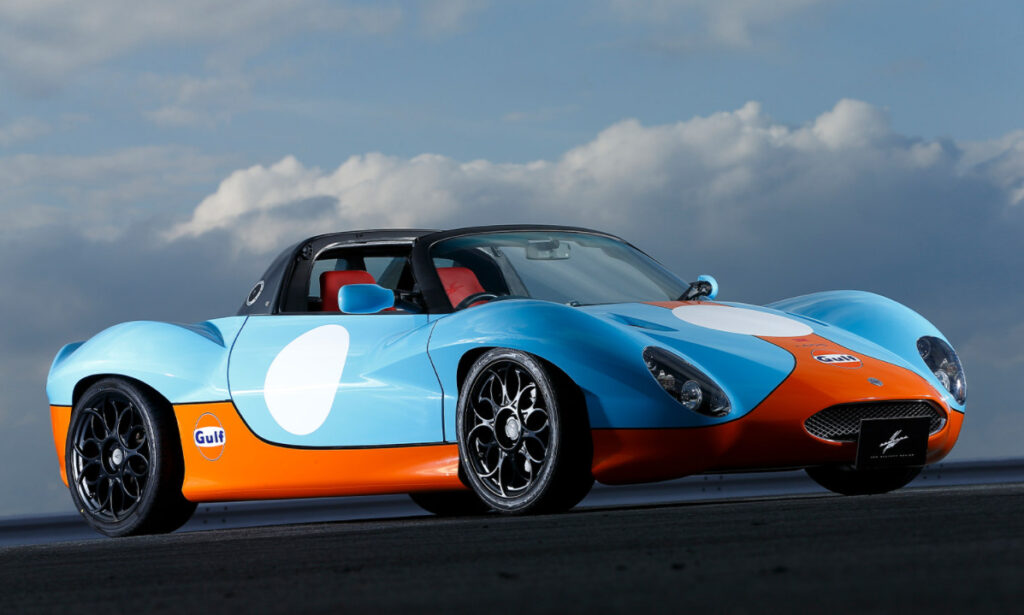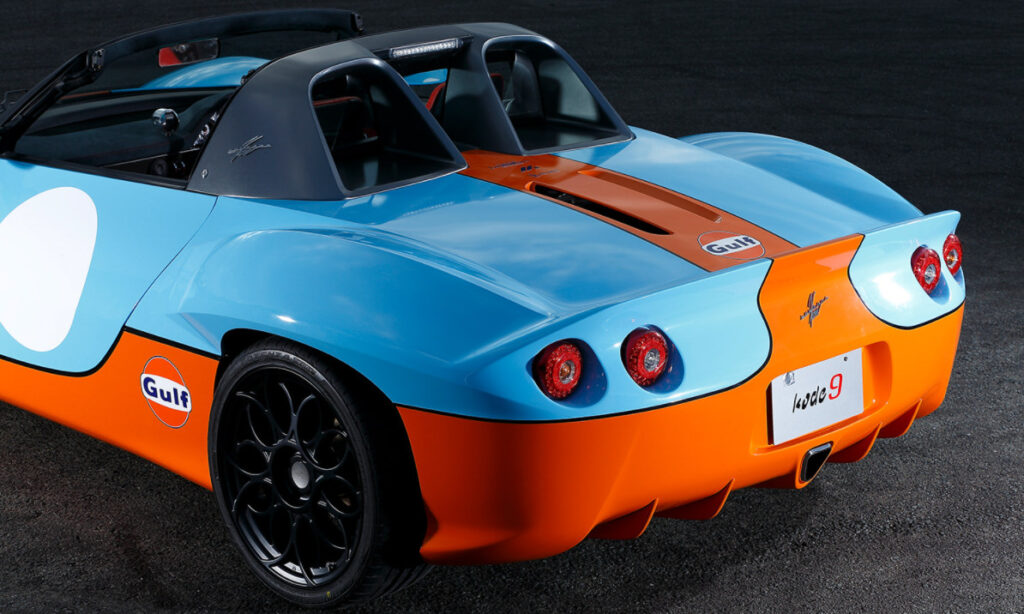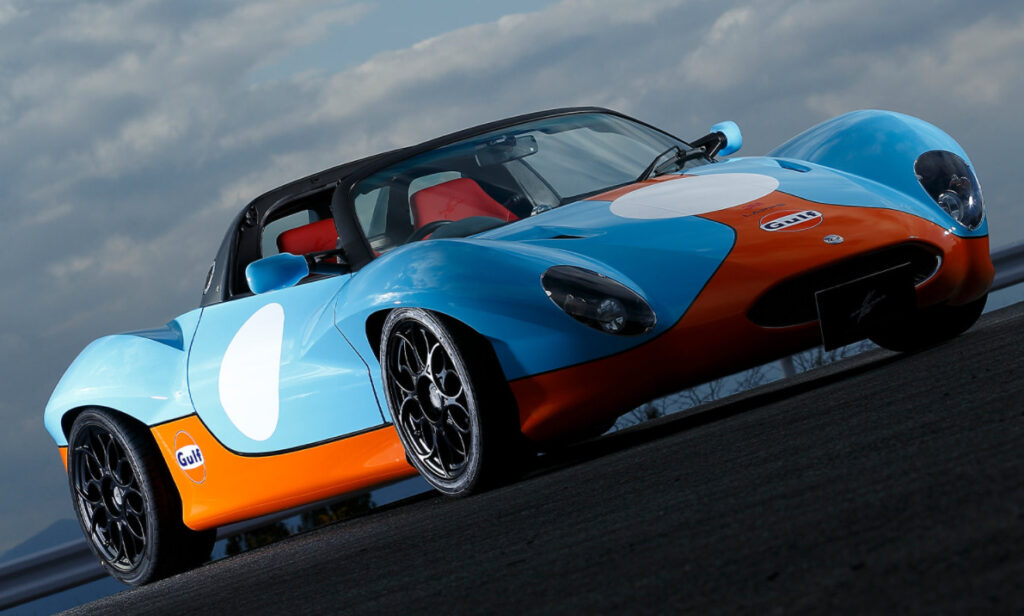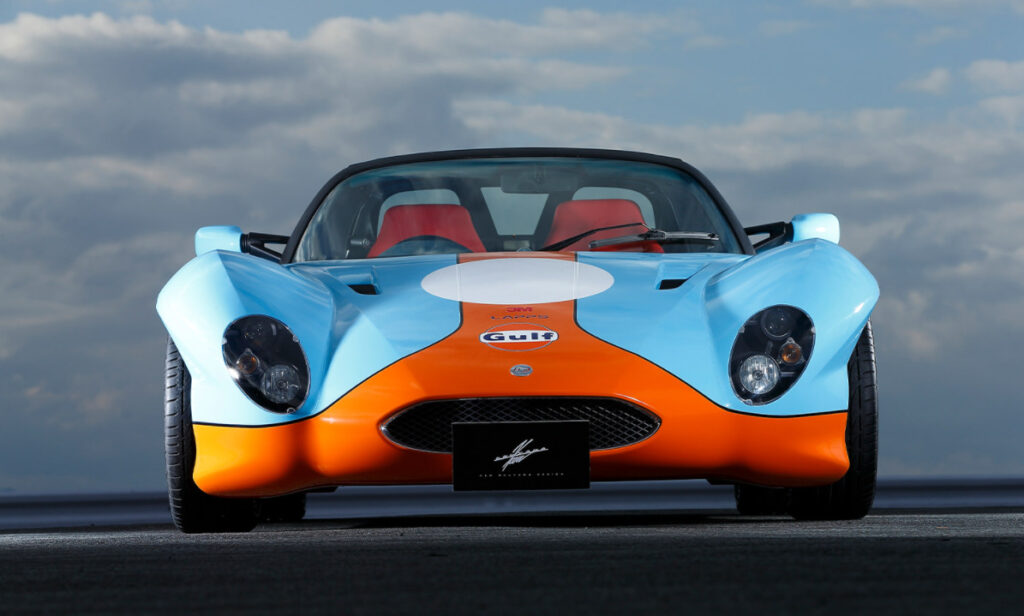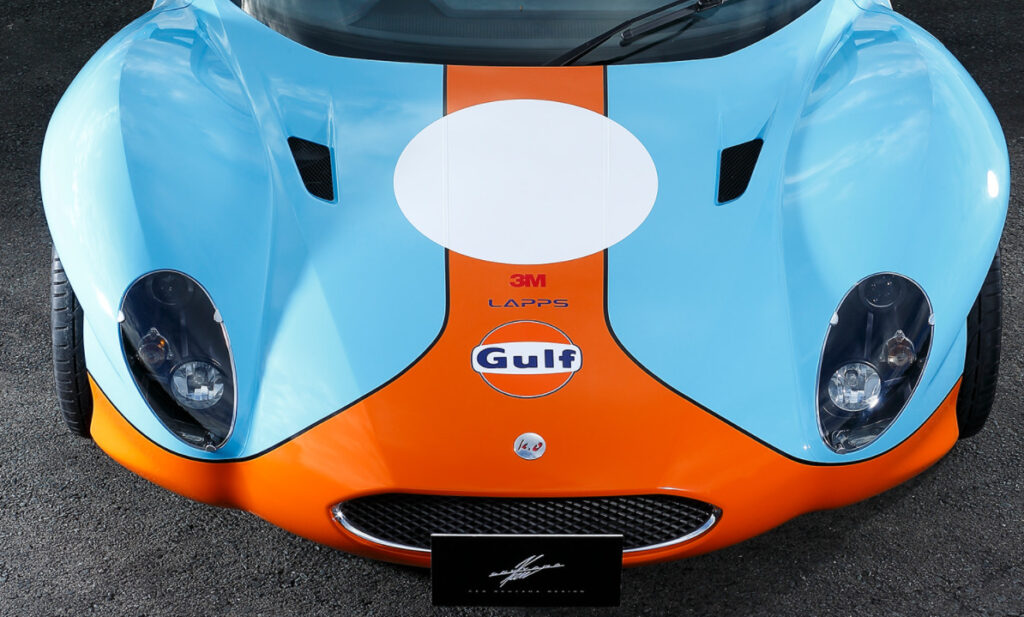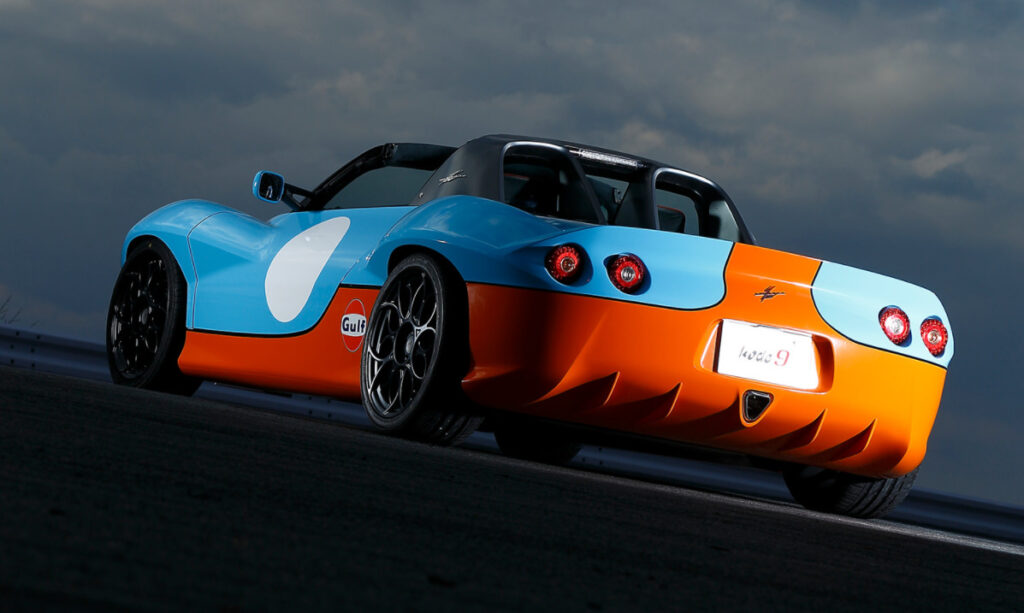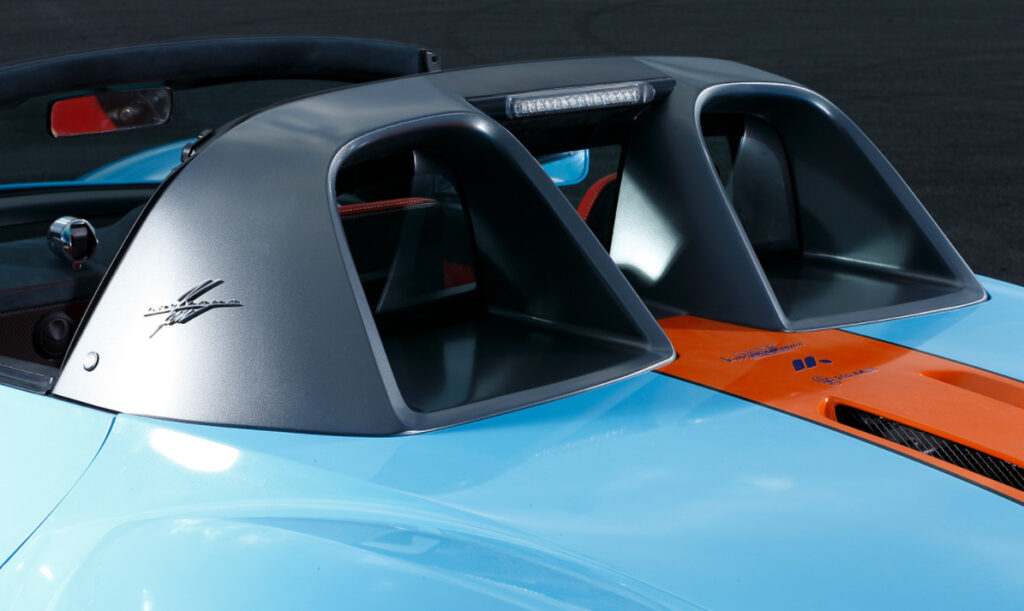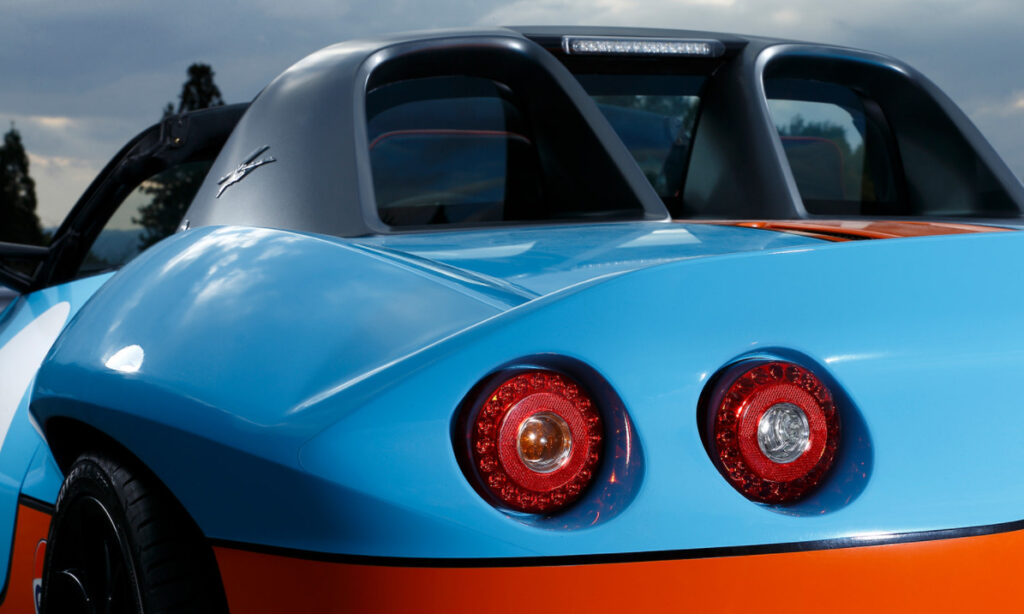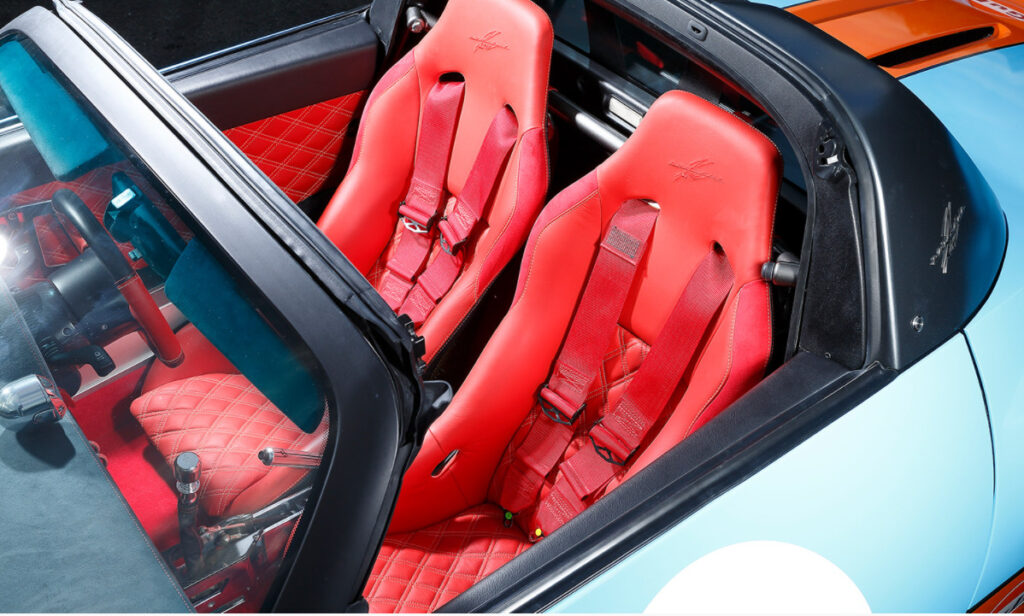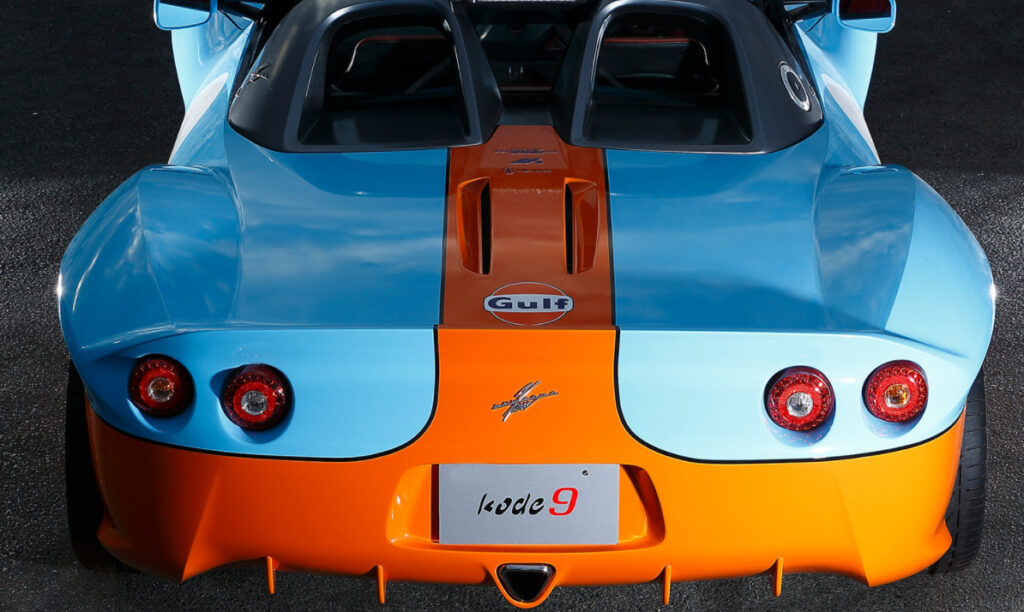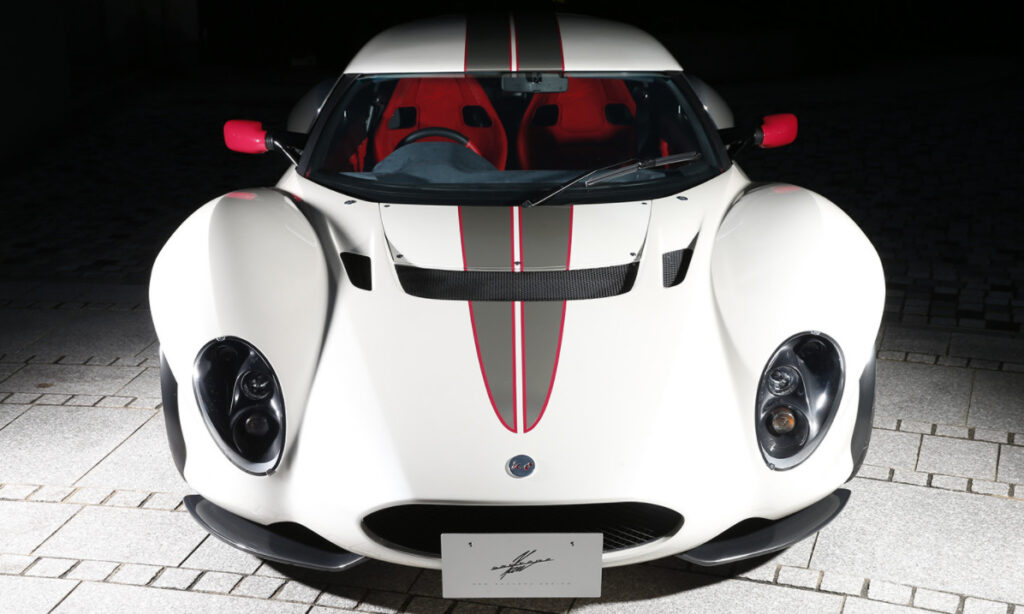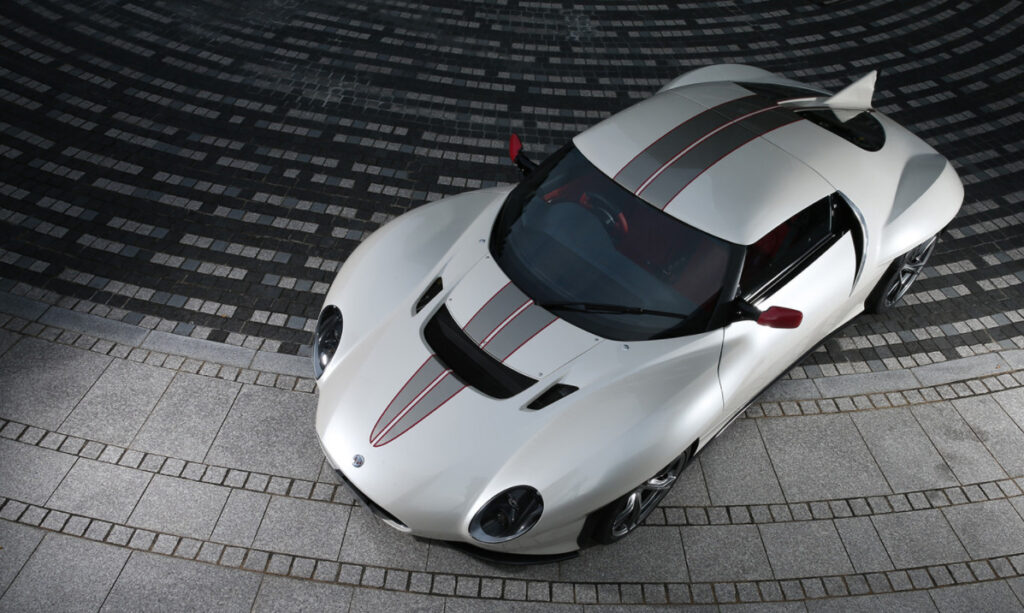Ken Okuyama is a Japanese industrial designer that worked for Pininfarina leading the design of several Ferrari models. After leaving Pininfarina, he started Ken Okuyama Design focusing on the design of several industrial products such as trains, agriculture machinery and furniture. Next to that, he also started Ken Okuyama Cars as a Japanese coachbuilder making handcrafted cars. The first model was revealed in 2008, as the Kode7 Clubman.
In 2013 at the Tokyo Motor Show, Ken Okuyama Cars revealed a new car named the Kode9. The design was based on racecars of the 60’s and 70’s era, with a unique feature being the center tail spoiler. Under the skin, an aluminium tub of Lotus is used with a unique front and rear subframe. For the body several carbon components are used to keep the light as low as possible. This resulted in a gross weight of only 890 kilogram. The complete rear part of the car is a clam shell type of opening which gives access to the midship mounted engine.
As standard, the Kode9 was equipped with a 1.8 liter, four cylinder Honda engine including HKS supercharger mated to a 6-speed manual transmission. The engine is supposed to pump out up to 370 horsepower at around 8000 rpm, giving the car a very good power to weight ratio. For an additional cost it was also possible to get a different engine up to the customers choice. The suspension is fully adjustable and the brakes were sourced from Akebono, giving the Kode9 big 4-pot calipers.
In there interior there is a red and black theme. Red quilted leather is used for the seats, doorcards and headlining. Even the carpet has a matching red color. At other parts in the interior alcantara and carbon have been used. The majority of the parts are uniquely produced for this car but if you look good around the interior you might recognize some parts from other cars as well. Example being the ventilation vents.
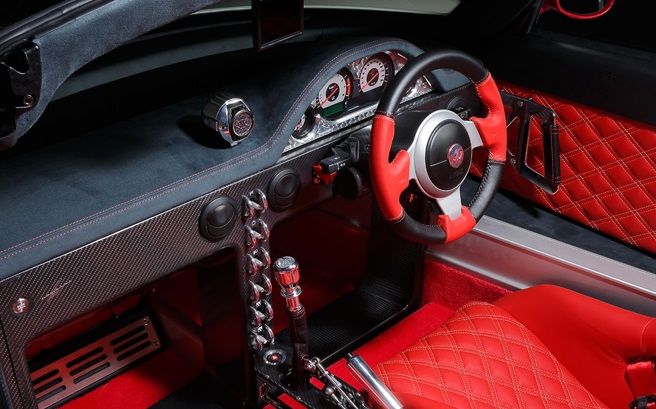
All of the switchgear, garnishes and exposed shifter linkage have been created with a lot of craftmanship and really give the interior a luxury feel. Momo supplied the steering wheel with airbag however in the passenger side there is no airbag. With no rear windows it was also necessary to fit a rear camera with monitor instead of a rear view mirror.
Two interesting accessories that can be had with the car are one, a TAG Heuer Boston bag and two, a limited edition TAG Heuer Carrera Kode9 watch. This watch can then be put in the holder that is mounted on top of the dashboard.
A convertible version of the Kode9 was also released, as the Kode9 Spyder. The rear body structure of the coupe disappeared in favor of visible roll bars finished in carbon. As such the noticeable center rear spoiler also disappeared. The hard top roof was changed by a soft top. In addition, some structure improvements were made to the car which resulted in an even lower vehicle weight than the coupe model of the Kode9. The boomerang shaped rear lights were exchanged with double round units on each side and a new ducktail spoiler was added to finish of the unique look of the Spyder. The standard engine and suspension were same as was found on the regular Kode9. Also here the customer could specify an engine choice to their liking. It is said that only 5 units of the Kode9 Spyder were made.
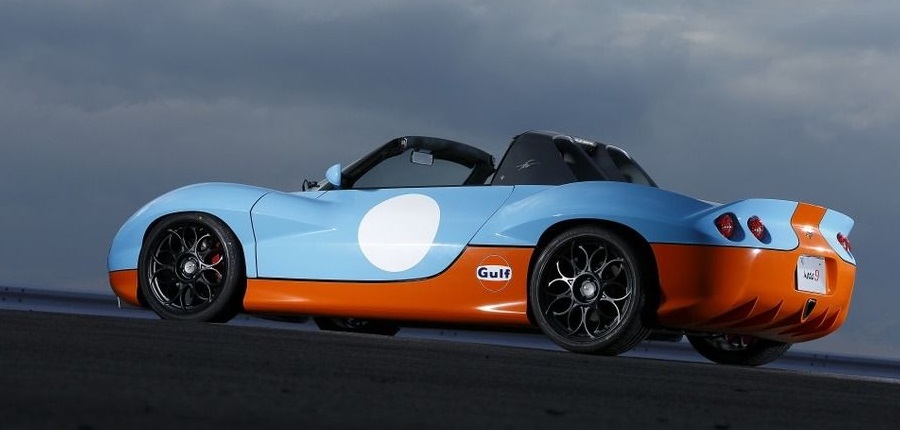
A slightly different variant of the Kode9 coupe has been spotted on pictures but information is scarce. This version has two round windows and a center glass window included in the rear body structure. As such you can also see the engine from outside of the car. Under the side sills and front of the car have been added black lips as can be seen on the header picture of this article. Other differences are that the front fender also has an indicator and the hard top is painted in the same color as the body. It is likely that this car was an example to show to the customer of what was possible in terms of customization.
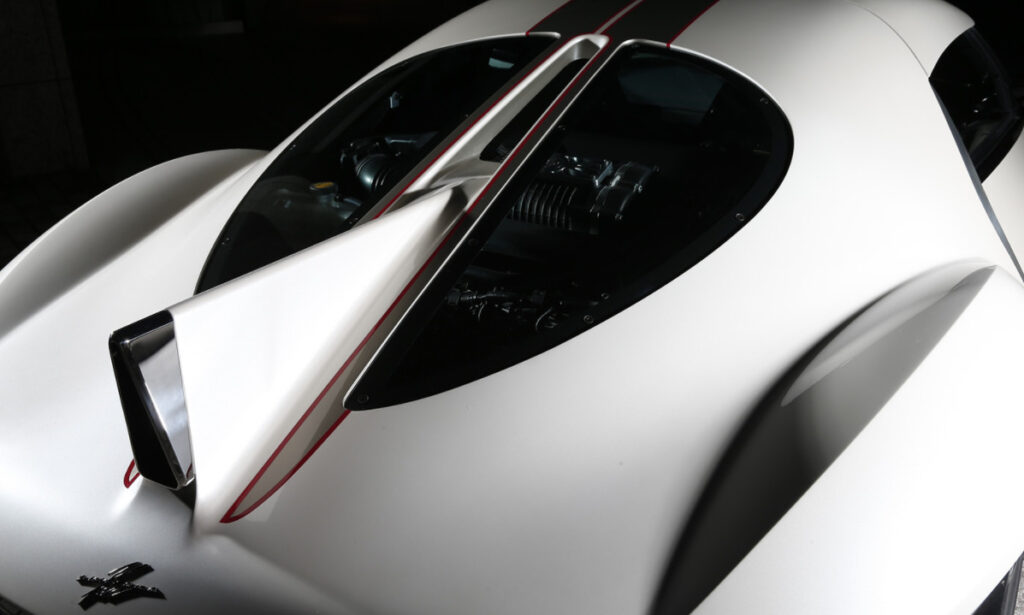
In Yamagata city there is the Yamagata Factory of Ken Okuyama Design in which this Kode9 was handcrafted. The price of the Kode9 was around 15 Million Japanese Yen but depending on the customisation it could be more expensive. Not many units have been sold making it a rare car. Occasionally a second hand example pops up on the Japanese car market.
Here are some other pictures:

